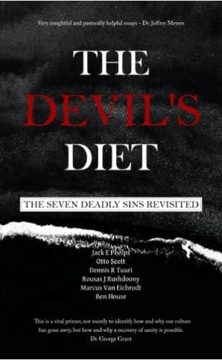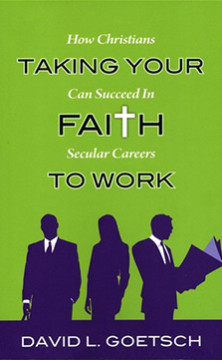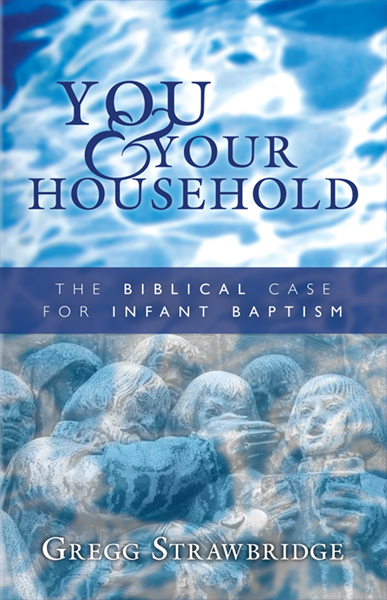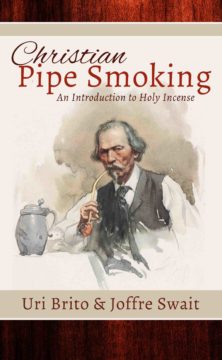Last week, our church hosted a Vacation Bible School that included the story of “David and Goliath” as one of the Bible stories. I was responsible for the “Bible story station” that introduced the characters, the meaning behind the story, and its application. Groups would spend twenty minutes with me and then return later in the day for ten minutes of reflection and prayer.

Our VBS theme’s package included scripted lessons that a leader could simply read with sample questions and ideas for applications for various age groups. Our materials were produced by the Methodist publisher Cokesbury and generally faithful to the Biblical story. They were also insightful about how to manage the attention of younger students, but like all modern children’s curricula – do not expect much from the child.
On Bite-Sized Lessons
Exercises like this always cause me to question how much of Sunday’s sermon is actually understood by my youngest congregants. The VBS curriculums seem to assume that children need everything delivered in such easily digested, bite-sized pieces. Perhaps this level of VBS is meant for children who may have never been to a church. But not even two minutes into my introduction of David and Goliath it was obvious that my group of eight and nine-year-olds were already very familiar with the details of the story—down to the number of stones that David collects. The study guide wanted me to focus on “facing bullies” and “overcoming adversity” but the kids had heard it all before.
Caught off guard, I went into “Rev. Clowney Mode” and thought I would pivot into teaching how Goliath’s downfall points to Christ. Now completely off script, I asked the students, “So what happened to Goliath next?” A few hands went up. One young man was so excited to share that I decided to ignore his impatient “I know! I know!” and call on him anyway. “David cut his head off!” For some strange reason, this scene wasn’t included in the coloring sheets and didn’t make it into any of the suggested drama skits for the day. Go figure.
And, “and then what happened?” I asked. The students looked at each other, shrugged, and back to me. Here I explained that King David eventually took the giant’s skull to Jerusalem, to be buried just outside of the Holy City of Jerusalem.
I asked them to consider Goliath a type of serpent, reminding them that “coat of mail” that we see described as his armor in 1 Samuel 17 is more akin to a breastplate of snake scales. I then asked them to remember the Garden of Eden and to consider the promises made to Adam and Eve after their expulsion, chiefly that a descendent of theirs was to crush the head of the serpent. I pointed out that in our Scripture reading, David’s stone “sunk” into Goliath’s head. David was Adam’s great-great (times thirty-five generations) grandson and he was well aware of the promises to his family’s line. He and all future generations would remember David as the son of Adam who had crushed the serpent with a stone to the head.
Yet David was only fulfilling part of that promise. David’s battle with Goliath was looking forward to when the Messiah would destroy the true serpent and undo mankind’s death curse. David anticipated this when he brought Goliath’s skull back to Jerusalem as a covenant sign of God’s future faithfulness. For the very place that David buries Goliath’s skull is to become the very same spot that Jesus is to be crucified: Golgotha.

As James B. Jordan points out:
“Golgotha is just a contraction of Goliath of Gath (Hebrew: Goliath-Gath). 1 Samuel 17:54 says that David took the head of Goliath to Jerusalem, but since Jerusalem was to be a holy city, this dead corpse would not have been set up inside the city, but someplace outside. The Mount of Olives was right in front of the city (1 Kings 11:7; 2 Kings 23:13), and a place of ready access. Jesus was crucified at the place where Goliath’s head had been exhibited. Even as His foot was bruised, He was crushing the giant’s head!”
Biblical Horizons Newsletter No. 84: Christ in the Holy of Holies The Meaning of the Mount of Olives by James B. Jordan (April, 1996)
I had gone way off course from the VBS script. I was talking about burying a giant’s skull and Christ crucified, where the script had this as its closing reflection: “If you wonder how you can face challenges that might seem bigger than you, remember that with God you can find what you need to help you meet your challenges.”

At reflection time they returned eager for more juicy details about David’s bloodlust, only for me to remind them of Christ’s present promises to conquer sin and that perhaps us miserable sinners are more like Goliath than David in the story. We deserve a stone to the head for our life of war against God. And like Goliath’s lifeless skull outside of Jerusalem, our only hope was the blood dripping down from the saviour on the cross.
On Practical, Relevant Preaching
The need for a “practical application” and the lure of relevance or accessibility has detached the Christian meaning of David versus Goliath from its place in the story of the Gospel. King David as a historical figure with a natural and spiritual lineage leading to Jesus is of no real consequence in the VBS version. While I have no doubt that this story also presents a great opportunity for character building in giving us examples of overcoming adversity, let’s not limit David to the realm of mere fable.
After all, popular authors have done much better than pastors with this self-help approach. For example, Malcom Gladwell parlayed the underdog notion of David and Goliath into a New York Times Bestseller back in 2015 when he connected this story to all sorts of character applications. Everything from the religious sacrifices of the French Huguenots to the jumbled but noble struggle of dyslexics. In Gladwell’s applications, the whole idea of the story was simple: what we saw as disadvantages in the small-statured shepherd boy, were actually his secret weapons against the Philistine giant. David had it in him the whole time, everyone else just couldn’t see it. Is this the message of Christ?
We must contend that the Holy Spirit did not include the battle with Goliath to add a Hebrew hero to the Aesopica. David’s battle must be more than a story for inspiring courage and spurring on self-development. We have not faithfully taught any passage of Scripture without connecting it to the story of Christ’s redemption. Or as Rev. Edmund Clowney put it, “Preachers who ignore the history of redemption in the preaching are ignoring the witness of the Holy Spirit to Jesus in all the Scriptures.”

Esoteric Speculations
Grounding our teaching in the story of Christ also prevents the fetishizing of obscure details in the Hebrew text. I was recently asked to lead a book study through Michael S. Heiser’s book The Unseen Realm. While leading the study, I quickly learned that the generation of men taught under “relevant preaching” styles had missed out on the necessary theological framework to hang the Old Testament narratives. They craved the order and structure The Unseen Realm offers. Unfortunately, Heiser’s book reads like he has just recently unlocked a secret code to understand the Bible through special ancient symbols and obscure language clues.
Speculations about Nephilim, angels, and giants creep in and have the power to wedge an artificial gap between our historical theology and our new pet passages. Men like Othmar Keel, Meredith Kline, and Gregory Beale have been offering us similar approaches to Biblical symbolism while staying within Nicene orthodoxy and the historic church. And of course, James Jordan offered a very accessible compendium of Biblical symbolism in his book Through New Eyes.
How much did Goliath’s armor weigh? Were his ancestors fallen angels? Did the giants survive the flood? Does new Philistine DNA evidence prove the existence of bronze-age giants? The depths of the Biblical text are inexhaustible, or as D.A. Carson put it in his book The Gospel as Center, “The Bible is an ever-flowing fountain…” but wild speculations detached from the story of salvation are not equal to seeing Christ in every passage of Scripture. To see Christ in every God-breathed passage is to drink from the living stream, while a desire for obscurity inevitably leads to the brackish waters of pseudo-scholarship based in the mysteries of pseudepigraphon and cliches of post-modern religious studies.
Teach Christ
There’s nothing foolish, redundant, or mediocre about Christ-centered preaching. Those who love the Lord will never tire of hearing how Christ is present on every page. Those who are far from him desperately need to hear him speak to every area of life. Let us never grow weary in taking captive every thought to make it obedient to Christ. (2 Corinthians 10:5)












 It’s not hard to see how much influence a father has on his child’s future. From a worldly perspective, this is often referred to as the “birth lottery.” Writing for
It’s not hard to see how much influence a father has on his child’s future. From a worldly perspective, this is often referred to as the “birth lottery.” Writing for 
 A father-leader must recognize that his family is an essential part of his own salvation. He needs the prayers of his wife and children. He needs their gifts and even their weaknesses. The wife and children the Lord has given you are part of God’s plan of forming you into the image of his Son, therefore the father-leader must recognize where his family is going and be patient. I often remark that my sins are most evident in the sins of my children. Fathers should then look at our sins as a clue to where our children will also struggle. This is why it is so important that Fathers are working out their own issues, so as to avoid their owns sins being, “visited unto the third and fourth generation.” To avoid passing on their sins as their children’s inheritance.
A father-leader must recognize that his family is an essential part of his own salvation. He needs the prayers of his wife and children. He needs their gifts and even their weaknesses. The wife and children the Lord has given you are part of God’s plan of forming you into the image of his Son, therefore the father-leader must recognize where his family is going and be patient. I often remark that my sins are most evident in the sins of my children. Fathers should then look at our sins as a clue to where our children will also struggle. This is why it is so important that Fathers are working out their own issues, so as to avoid their owns sins being, “visited unto the third and fourth generation.” To avoid passing on their sins as their children’s inheritance.



















